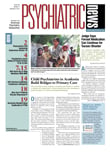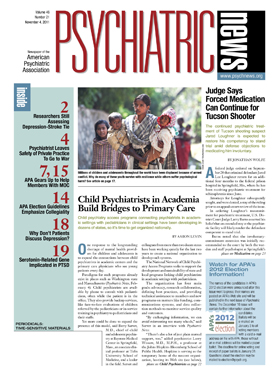Requiring hospitals to enter medication orders electronically for at least 30 percent of their eligible inpatients is associated with statistically insignificant reductions in the mortality rate of those presenting with certain conditions, but increasing the required percentage of these computerized orders may yield more notable effects in the future.
So reported researchers from the RAND Corp. in a new study whose findings are published in the October Health Affairs. According to the researchers, this study is one of the first to explore the relationship between a specific "meaningful use" measure of the Medicare and Medicaid Electronic Health Record (EHR) Incentive Program—the computerized entry of provider medical orders—and hospital mortality rates.
Under new health information technology provisions of the American Recovery and Reinvestment Act of 2009, hospitals, physicians, and other health professionals are eligible for federal incentive payments when "meaningfully" using certified EHR technology. This program is designed to ensure that health care providers not only obtain new EHR systems, but comply with a set of established measures aimed at engaging patients and families, improving care coordination, and maintaining privacy and security.
For their study, RAND scientist Spencer Jones and his colleagues assessed the mortality rates of hospital inpatients within 30 days of being hospitalized for heart attacks, heart failure, or pneumonia. They obtained mortality figures from the September 2008 release of the Centers for Medicare and Medicaid Services Hospital Compare database.
The researchers also chose to pool information from a "large, diverse" sample of U.S. hospitals, as earlier studies on single institutions produced findings that may not be broadly applicable. Data on hospital characteristics were obtained from the 2007 American Hospital Association (AHA) Annual Survey database, with the researchers limiting their analysis to the 4,644 general acute care hospitals not owned by the federal government. Information on the use of computerized medication ordering was gathered from the 2007 AHA Information Technology Supplement.
In comparing mortality rates among hospitals asked to self-report on their use of electronic medication orders, the researchers found a "statistically significant" relationship between the level of electronic ordering and deaths from heart attack and heart failure, but not from pneumonia.
While hospitals estimating that they place electronic medication orders for as few as 1 percent up to 25 percent of their patients were associated with a lower rate of death from heart attack than hospitals with no electronic orders, more consistent reductions in deaths from both heart attack and heart failure were associated with hospitals estimating computer provider order entries for more than 50 percent of their patients. The researchers noted that the majority of hospitals (61 percent) reported no use of electronic medication orders.
Because the first stage of the EHR Incentive Program calls for hospitals to place a minimum of 30 percent of their eligible inpatient medication orders electronically, the researchers also conducted a simulation to evaluate the effects of universal adoption of this electronic ordering threshold on hospital mortality rates. The simulation indicated that this initial level of computerized order entry could reduce the number of inpatient hospital deaths from heart attack and heart failure by 1.2 percent, a rate the researchers said fails to achieve statistical significance.
However, a simulation of hospitals using electronic medication ordering for 60 percent or more of their patients, a rate currently proposed for the second stage of the EHR Incentive Program, was associated with a 2.1 percent reduction in mortality rates. The researchers concluded that the increased use of electronic medication order entry has the potential to reduce hospital mortalities in the future.
Funding for the study was provided by contributions from members of the RAND Health Board of Advisors.

